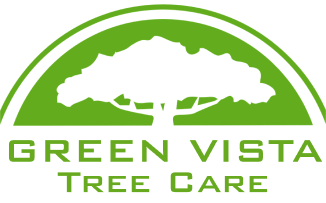Did you know that your Northern Virginia yard could make a difference to local wildlife, the environment, property values, and more just by planting native trees and plants?
While it can be tempting to add non-native plants that are exotic, rare, popular at the moment, or are something you grew up around in a different area, the best option is always to plant native.
In this article, we will go over the many reasons why you should consider adding more native trees, shrubs, plants, flowers, and grasses to your Northern Virginia landscape.
What are the Definitions of Native, Non-Native, and Invasive?
It’s important to know the difference between plants and trees that are native, non-native, or invasive.

Native Trees and Plants
Native trees or plants have existed in Northern Virginia for (at least) hundreds of years. They work together with other plants and wildlife in many ways, including:
- Flowers providing pollen and nectar for pollinators
- Trunks, branches, and foliage providing shelter, habitat, and nesting sites
- Fruit, nuts, seeds, and berries providing food
- Native trees and plants attract native insects, which become food sources for native wildlife
- While non-native vines can strangle or even take down a tree, native vines don’t harm native trees
- And more
An example of a native tree is the tulip tree (Liriodendron tulipifera), a tall tree with tulip-like flowers.
Native Trees for Northern Virginia from Plant NOVA Natives >>
How to Choose the Best Tree to Plant in Your NOVA Yard >>
Non-Native Trees and Plants
Anything that is not original to our area is considered non-native.
Another word for non-native is “introduced,” as non-native trees and plants were introduced, intentionally or unintentionally, from other parts of the world.
If a non-native tree has thrived in our area for a while, it can become known as a “naturalized” species. There are over 600 naturalized trees and plants in Virginia, and around 15% of them have become invasive.
Not all non-native plants and trees cause issues, but they do not work as well in our local area as native trees do.
While non-native plants and trees can survive (and sometimes thrive) in Northern Virginia, they do not always benefit local wildlife. If non-native plants grow out of control, they can become invasive.
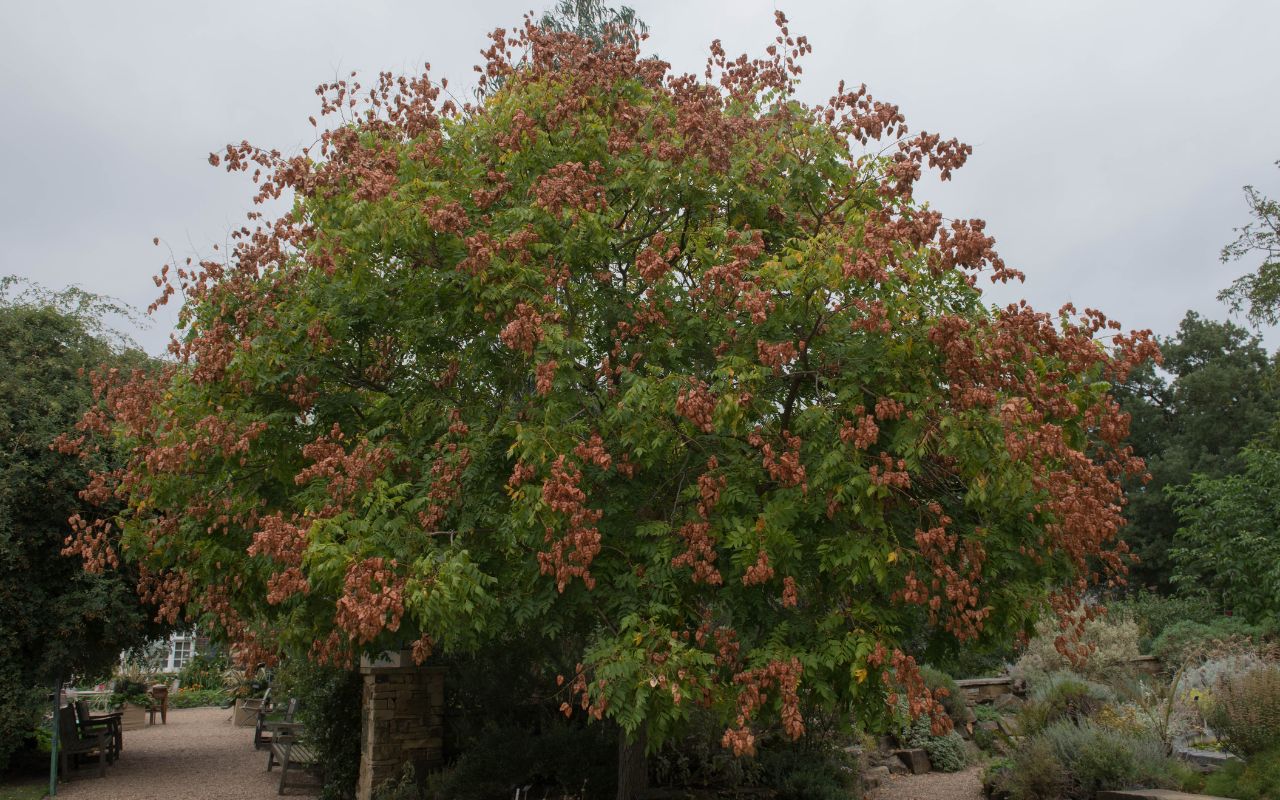
Invasive Trees and Plants
Invasive trees and plants (including vines) are any that are growing and spreading so rapidly that they are actively harming the Northern Virginia area and our native plants. They usually have invasive root systems or prolific seeds, allowing them to take over areas quickly. Invasive species are usually difficult to control or remove.
The legal definition of “invasive” is:
“A non-native organism that, when introduced to the ecosystem in question, causes or is likely to cause economic or environmental harm or harm to human health.” Definition taken from Plant NOVA Natives on the “Invasive Plant Management” page.
According to the Master Gardeners of Northern Virginia, there are over 116 invasive species in the city of Alexandria and 77 invasive plants in Arlington County.
An example of an invasive tree in Northern Virginia is the golden rain tree (Koelreuteria paniculata).
View some Invasive Plants in Northern Virginia from the Master Gardeners of Northern Virginia >>
Read more about some of the invasive trees you should not plant and what to plant instead >>
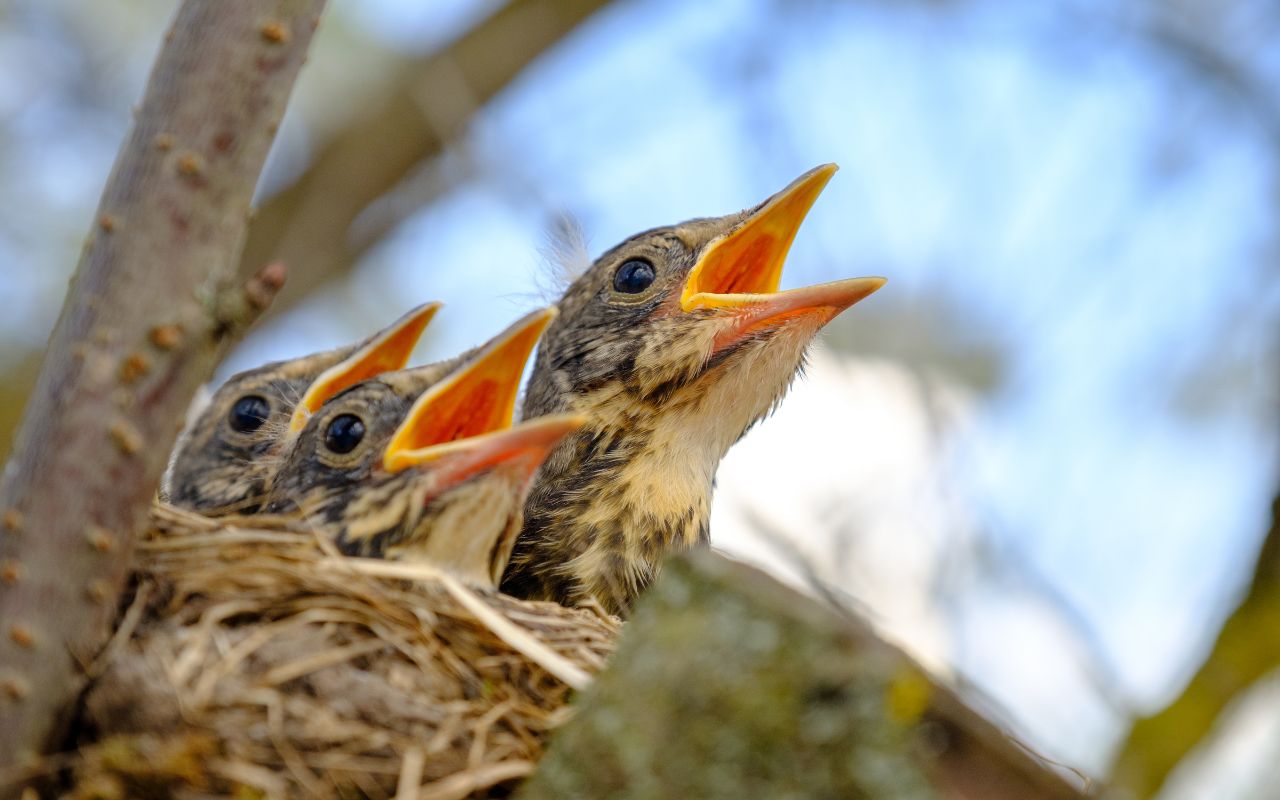
How is the Lack of Native Trees Hurting Northern Virginia?
We previously shared about the saga of Bradford pear trees. They were once purposely planted (and in some places, still are) because they were considered a perfect street tree. Only after they grew and multiplied did communities realize that the trees broke easily, stunk horribly when the flowers bloomed, and outgrew the spaces in which they were planted.
Since the Bradford pear tree is native to Asia, our native insects do not eat the tree. Which means there are fewer insects for birds to eat.
This is just one example of a tree that was planted with good intentions that ended up creating multiple issues in Northern Virginia.
Non-native trees, plants, and vines are causing other issues as well.
Fireflies are Disappearing
While the exact reason that fireflies are nearing extinction is not known, they are another native insect that is disappearing. There are more than 200 species of fireflies worldwide, and Northern Virginia is home to around 20 species, including the common eastern firefly (Photinus pyralis).
The common eastern firefly is actually a type of beetle, and it requires earthworms, snails, and other insects to survive. If there aren’t enough native trees and plants to encourage local insect populations, fireflies will die out.
Baby Birds Don’t Have Enough to Eat
Birdfeeders often have a combination of seeds that keep backyard birds well-fed, so why are non-native trees causing baby birds to suffer?
Young birds survive on insects, not seeds. And most insects only eat our native plants and trees. Some insects only eat one type of plant. For instance, monarch butterflies rely on milkweeds as a food source.
Other wildlife can suffer from lack of insects as well, including frogs, bats, dragonflies, and more.
Trees are Toppling from the Weight of Non-Native Vines
As we mentioned in our article about non-native vines, they can wrap around trees and cause them to break or fall.
If you have any non-native vines on your property, we recommend removing them before they cause any damage to your trees.
Invasive Plants and Trees Are Spreading
One of the reasons that invasive plants are so concerning is that they often steal nutrients, land, sunlight, or other resources from our native plants.
Intentionally removing anything invasive and choosing to plant native can prevent troublesome issues in the future on your property.
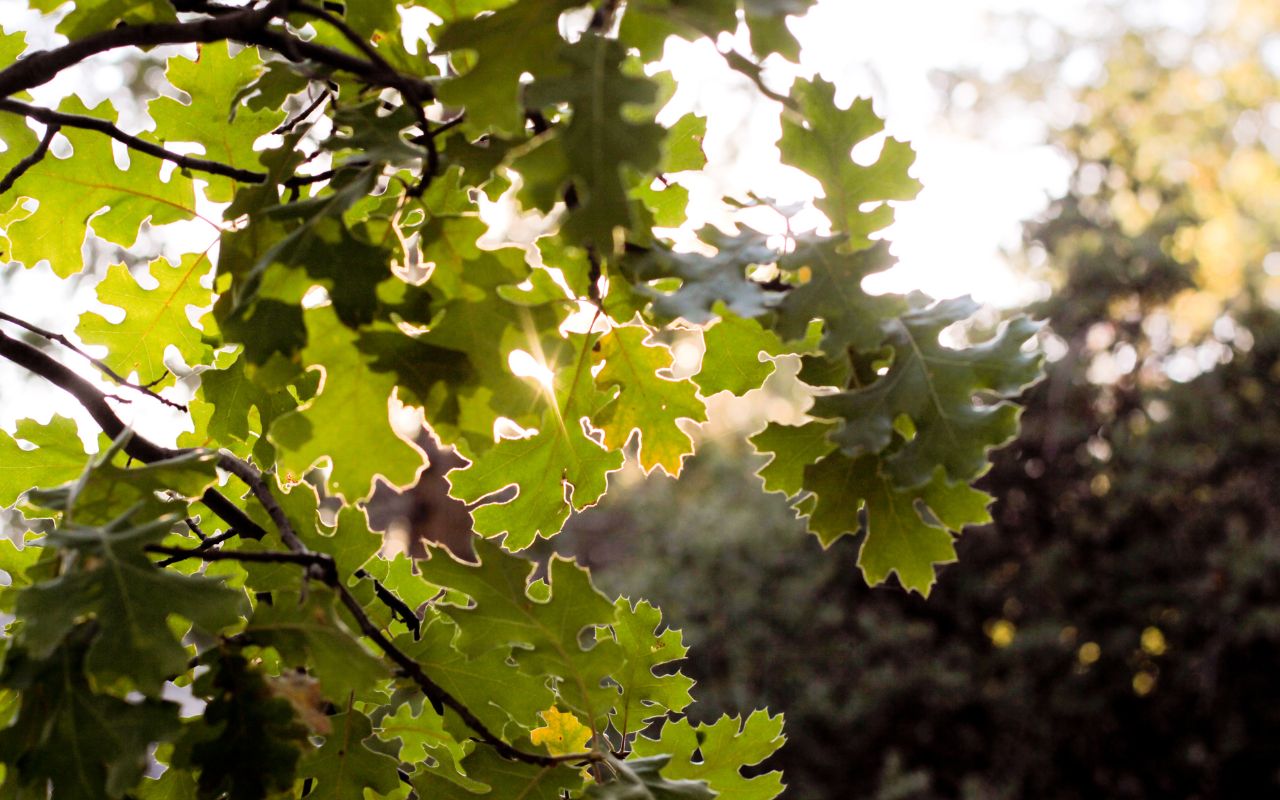
How Does Planting and Maintaining Native Trees Benefit Property Owners in Northern Virginia?
Along with avoiding some of the negative aspects of non-native or invasive trees or plants that we mentioned above, native trees and plants have several benefits.
Native Trees Need No Extra Watering
Once a native tree is established, it rarely needs supplemental watering. Instead, it is used to the rainfall that is available year-round here in Northern Virginia.
While many non-native trees need extra watering to survive in our climate, native trees will do well even without any supplemental watering.
Note: In some cases, supplemental watering will lead to more abundant fruit or flowers, faster growing rates, or more foliage. Supplemental watering may not be needed but can sometimes be helpful (just be careful not to overwater!).
Native Trees Are Less Hassle
Trees that are found naturally in Northern Virginia will naturally be easier to grow on a NOVA property.
Non-native plants and trees often need extra care and attention since they are transplanted to a place where they do not naturally grow. This could mean they need more pruning, fertilizing, or water, or it could mean constantly pulling suckers or preventing new seedlings from cropping up nearby.
Native Trees Attract More Birds and Wildlife
When your property has native trees, flowers, vines, and plants, you may notice more types of birds, butterflies, and other wildlife on your property. In fact, your yard may become a small ecosystem that not only looks beautiful but it helps sustain life for many types of wildlife.
Native Trees Lead to Cleaner Water and Less Erosion
The roots of native trees and plants can help filter rainwater in the ground before it reaches nearby streams. They also help to prevent erosion.
Native trees and plants are less likely to need pesticides, which can degrade our local water quality.
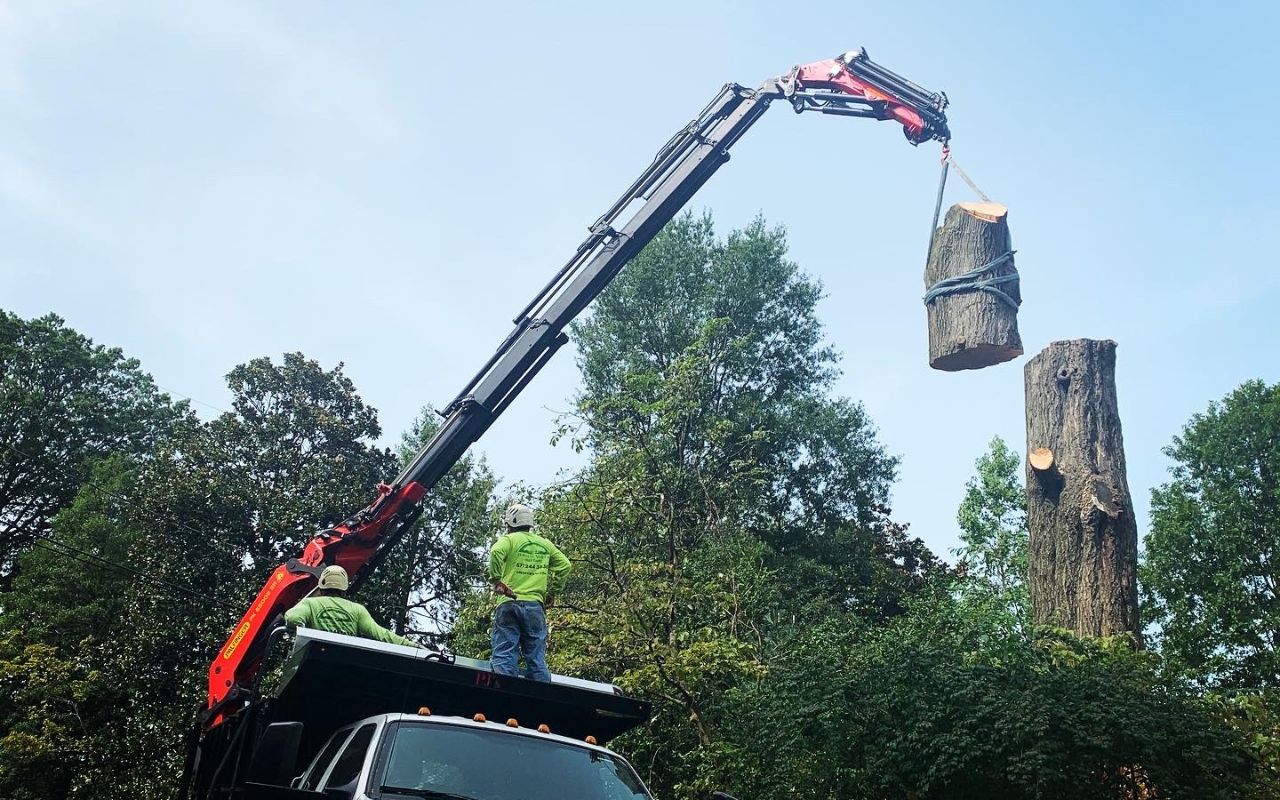
Remove Invasives and Plant Native When Possible
Now that you know the benefits of native trees and plants and the negative impacts of non-native and invasive trees and plants, we hope you will keep this in mind the next time you plan to add something new to your Northern Virginia property!
For more information on native trees and plants, there are many local organizations that are helping to spread the word about the importance of planting natives. Check out:
- Plant NOVA Natives
- Plant NOVA Trees
- Master Gardeners of Northern Virginia
- Virginia Department of Conservation and Recreation
- Virginia Native Plant Society
If you have a tree that is considered invasive, we recommend removing it as soon as possible. Contact Green Vista to schedule your professional tree removal.
Get helpful tips, local news, inspiring stories, and more delivered right to your inbox every month. Don't miss another issue - join today!
